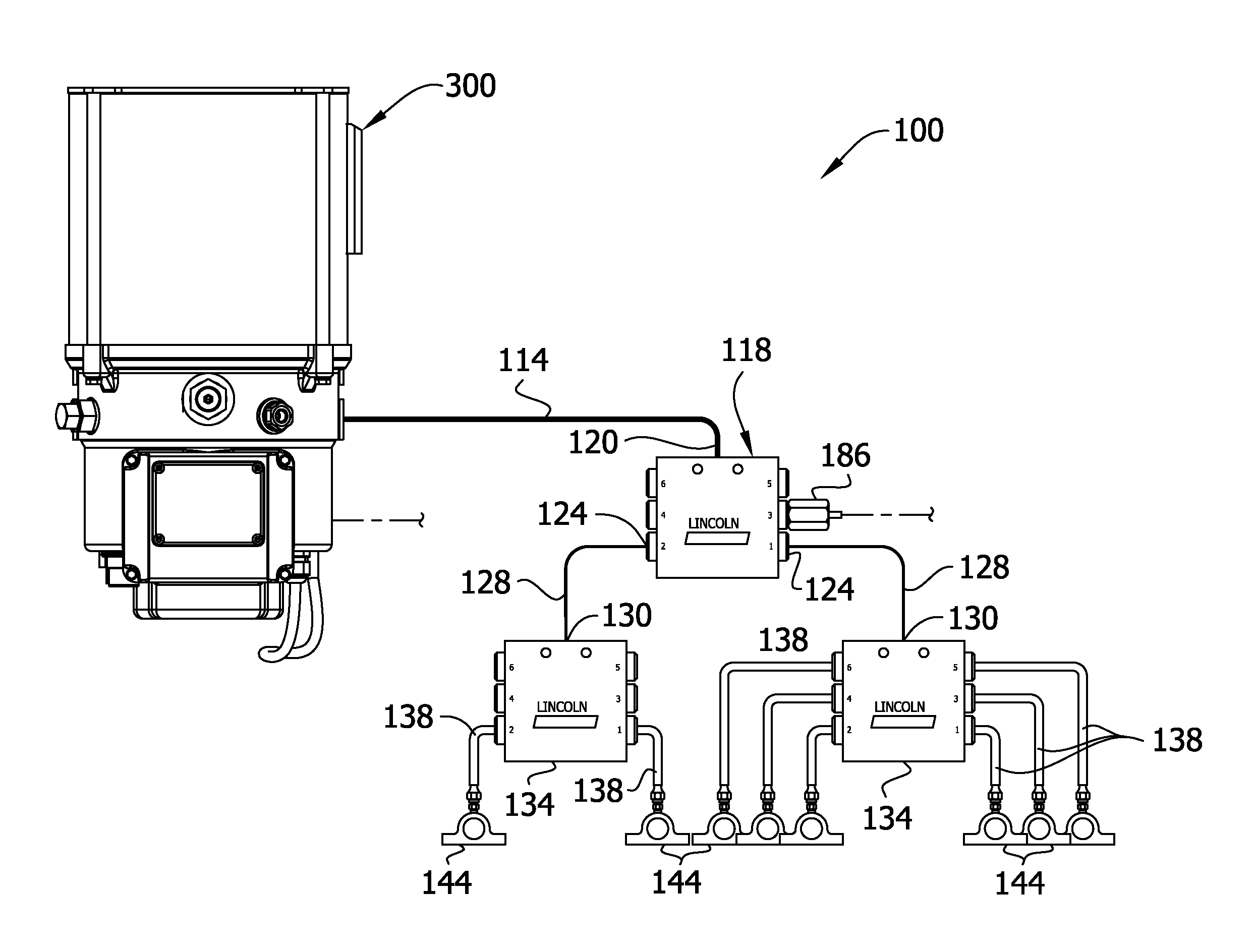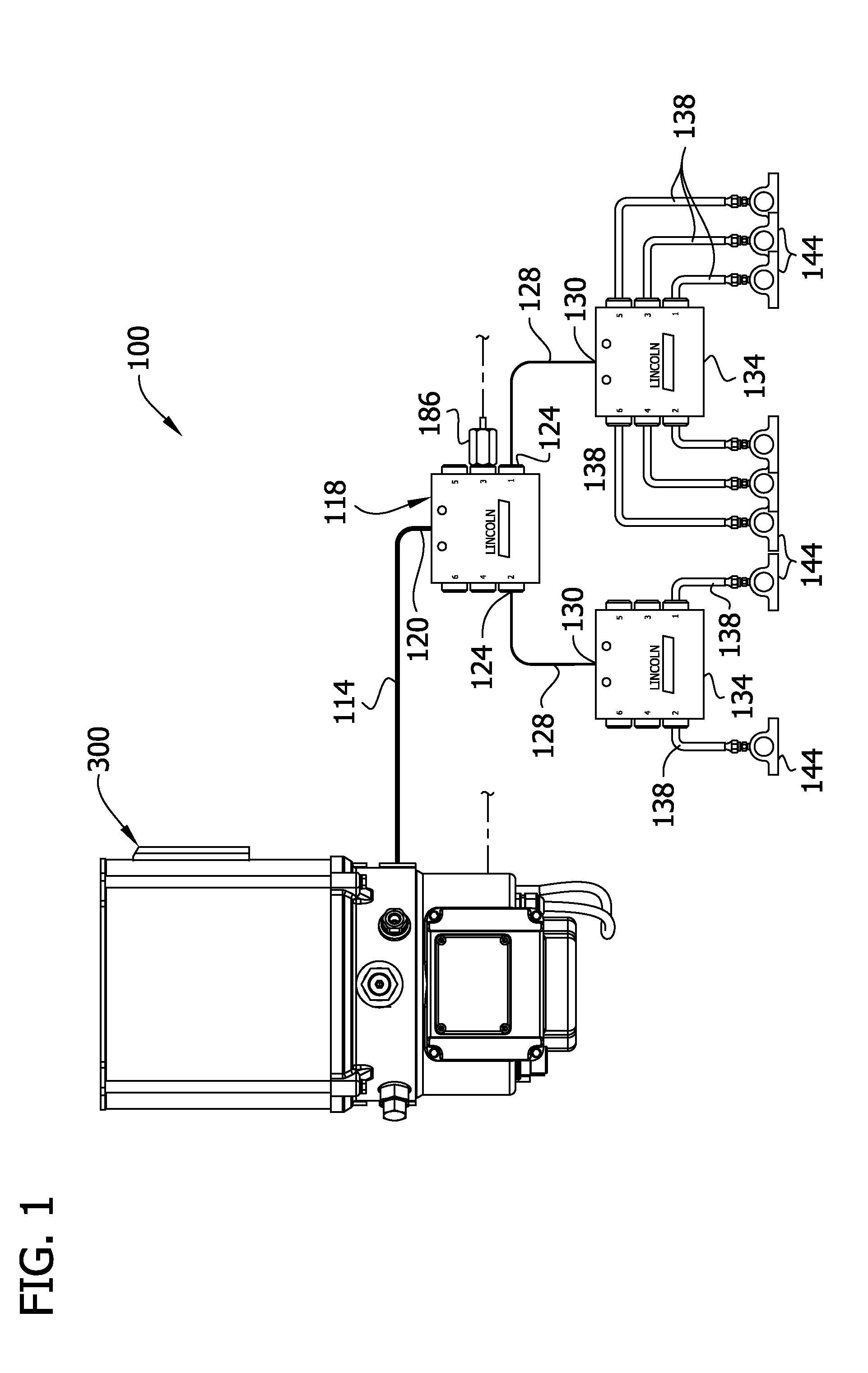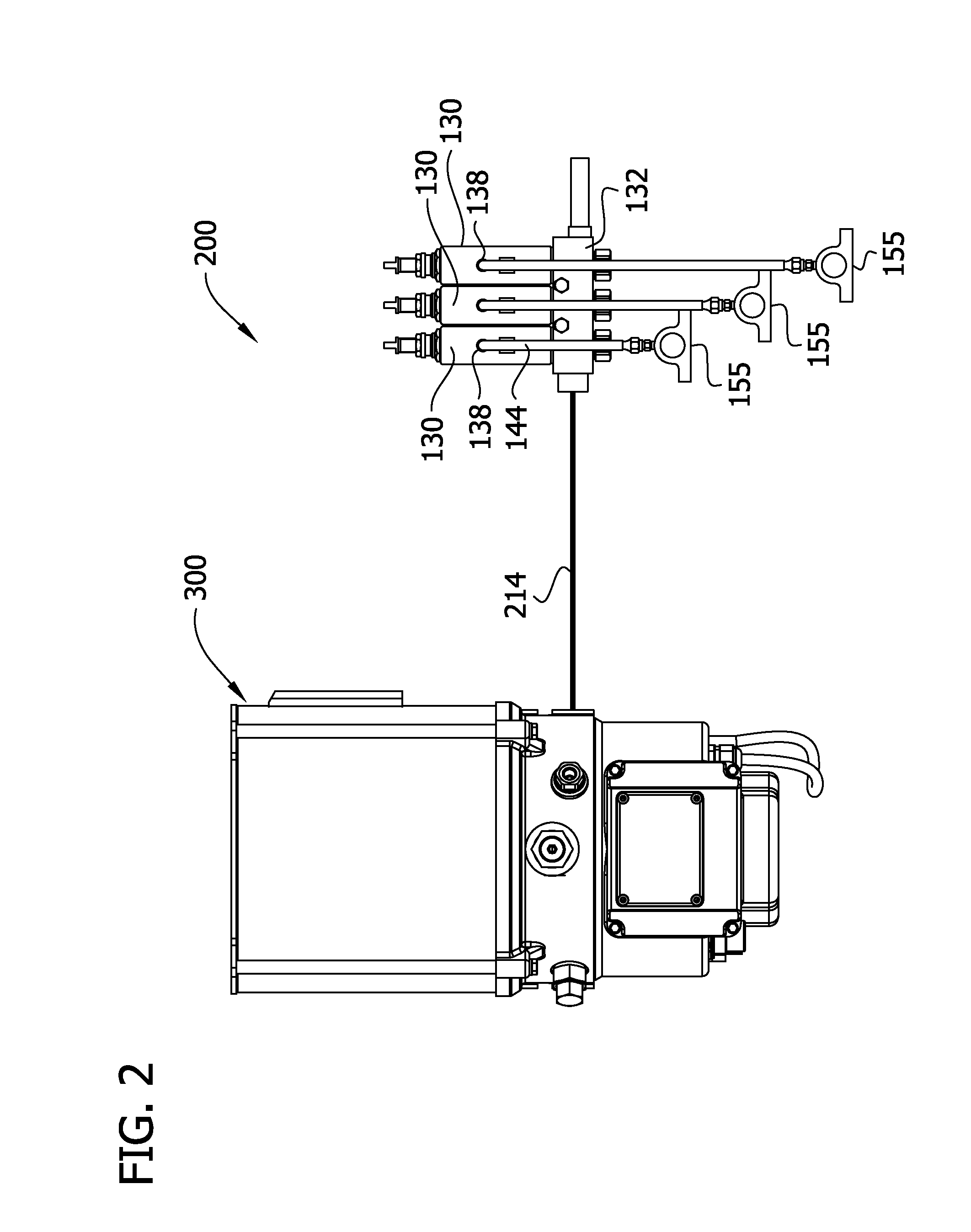Pump having wear and wear rate detection
a technology of wear and wear rate detection and pump, which is applied in the direction of positive displacement liquid engine, machine/engine, instruments, etc., can solve the problems of preventing the pump from producing adequate pressure, dispensing grease, and adding additives that wear the pistons of the pump
- Summary
- Abstract
- Description
- Claims
- Application Information
AI Technical Summary
Benefits of technology
Problems solved by technology
Method used
Image
Examples
example
[0065]Several prototype pumps developed by Lincoln Industrial were tested over a period of time to verify that wear could be assessed by a measured pressure drop as discussed above. The pumps were operated until the sensor measured a pressure of about 3000 psi, after which the piston was moved to a home position about 0.375 inches in front of the vent passage centerline and held in that position for 15 seconds. The pressure drop measured by the sensor was recorded after 15 seconds and the piston diameter adjacent its forward pressure face was measured to determine how much wear had occurred. The initial radial clearance between the piston and cylinder was about 3 to about 5 microns. After the test was performed several times over a variety of conditions, approximate measured pressure drops for various amounts of radial wear were determined. Ranges of wear present for measured pressure drops are shown in Table 1.
TABLE 1Correlation between Pressure Drop and Piston Radial WearApproxima...
PUM
| Property | Measurement | Unit |
|---|---|---|
| distance | aaaaa | aaaaa |
| pressure | aaaaa | aaaaa |
| time | aaaaa | aaaaa |
Abstract
Description
Claims
Application Information
 Login to View More
Login to View More - R&D
- Intellectual Property
- Life Sciences
- Materials
- Tech Scout
- Unparalleled Data Quality
- Higher Quality Content
- 60% Fewer Hallucinations
Browse by: Latest US Patents, China's latest patents, Technical Efficacy Thesaurus, Application Domain, Technology Topic, Popular Technical Reports.
© 2025 PatSnap. All rights reserved.Legal|Privacy policy|Modern Slavery Act Transparency Statement|Sitemap|About US| Contact US: help@patsnap.com



